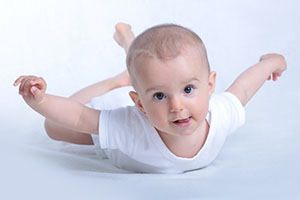 The US Federal Aviation Authority (FAA) strongly recommends that all infants and young children be seated in an appropriate safety seat (also referred to as a child restraint system or CRS) for air travel. But, to the dismay of many safety advocates, the FAA refuses to enact laws to mandate such seats, leaving the decision of using a CRS up to you, the parent.
The US Federal Aviation Authority (FAA) strongly recommends that all infants and young children be seated in an appropriate safety seat (also referred to as a child restraint system or CRS) for air travel. But, to the dismay of many safety advocates, the FAA refuses to enact laws to mandate such seats, leaving the decision of using a CRS up to you, the parent.
1. On US airlines, children younger than two years of age may sit unrestrained on an adult’s lap. There is no airline charge for “lap infants.” Presently the vast majority of parents opt to hold infants on their laps. Children older than two years must follow the same in-flight seatbelt use regulations as adults. However, many parents ignore the regulation and have older children sitting unrestrained on their laps. You may be required to present proof of age (such as a birth certificate). However, airline personnel rarely ask for proof.
 2. Infants are the only items on aircrafts that need not be battened down for takeoff, turbulence and landing. In case of severe turbulence or survivable crashes, an unrestrained 20-pound (9 kilos) infant sitting on your lap effectively and instantaneously becomes a 300-pound weight (136 kilos) that you cannot restrain. Unrestrained infants have hit the ceiling of aircrafts or been propelled several rows forward, resulting in serious injuries.
2. Infants are the only items on aircrafts that need not be battened down for takeoff, turbulence and landing. In case of severe turbulence or survivable crashes, an unrestrained 20-pound (9 kilos) infant sitting on your lap effectively and instantaneously becomes a 300-pound weight (136 kilos) that you cannot restrain. Unrestrained infants have hit the ceiling of aircrafts or been propelled several rows forward, resulting in serious injuries.
3. But air travel is extremely safe. The chances of an unrestrained infant or young child being seriously injured or killed by turbulence or in a survivable crash is far less than one in a million. About 4 million children under the age of two years fly annually on scheduled U.S. airlines. The universal use of seat belts may save one life or prevent one serious injury about every five to ten years.
4. Forcing parents to use CRSs could be counterproductive. The use of a CRS usually requires purchasing a seat for the CRS. The cost of the seat would convince many families to switch to cheaper automobile travel, a more dangerous form of transportation, potentially increasing the number of injuries/deaths of infants, says another government agency. However, this may be a bogus argument. Driving statistics include all drivers including those impaired, non-licensed, and teenagers. Presumably, adults driving children are safer drivers.
 5. The cost of purchasing an airline seat for the CRS varies. The cost varies from free (rarely) to full fare, averaging about half the fare. Costs vary with airlines and availability of seats. Special rates for CRSs may not be publicized. Ask.
5. The cost of purchasing an airline seat for the CRS varies. The cost varies from free (rarely) to full fare, averaging about half the fare. Costs vary with airlines and availability of seats. Special rates for CRSs may not be publicized. Ask.
6. CRSs have practical limitations. Until recently, a limitation was the cost of buying a CRS. Many infant car safety seats did not meet government requirements or did not fit into airline seats. Now almost all car seats fit and meet requirements. But CRSs are heavy and bulky. Carrying a seat, infant, and infant-needed paraphernalia is at best difficult and is almost impossible if only one adult is traveling. And even if you bring a seat, you spend considerable time holding or walking with your infant, reducing the time the seat is protective. Feeding, changing and comforting your infant in a CRS is difficult.
 7. CRSs do prevent rare accidents. Lap infants have been injured when they extended an arm or leg into the aisle and were struck by a food cart, or by sliding off a sleeping adult’s lap. Extremely rarely, sleeping adults have suffocated infants by slumping over an infant’s mouth and nose.
7. CRSs do prevent rare accidents. Lap infants have been injured when they extended an arm or leg into the aisle and were struck by a food cart, or by sliding off a sleeping adult’s lap. Extremely rarely, sleeping adults have suffocated infants by slumping over an infant’s mouth and nose.
8. Alternatives to car seat-type CRSs are available. A Child Aviation Restraint System (Cares) consists of a harness that the child wears. The use of a CARES requires an airline seat but not an infant’s safety seat. The harness attaches to the airline seat belt. It is approved for children weighing between 22 and 44 pounds (10 to 20 kilos), mostly children between one and four years of age. The harness is lightweight and fits easily into a diaper bag.
 9. And there are two CRSs not requiring airline seats. BabyB’Air and LapKidz are government-approved devices that attach infants via harness or straps to an adult’s seat belt. These may be used only for the cruise portion of flights, not for take-off or landing. They provide protection against turbulence, the leading cause of injuries during flights. Both also prevent infants from slipping off an adult’s lap. These devices are inexpensive, simple to use, and can fit into a diaper bag.
9. And there are two CRSs not requiring airline seats. BabyB’Air and LapKidz are government-approved devices that attach infants via harness or straps to an adult’s seat belt. These may be used only for the cruise portion of flights, not for take-off or landing. They provide protection against turbulence, the leading cause of injuries during flights. Both also prevent infants from slipping off an adult’s lap. These devices are inexpensive, simple to use, and can fit into a diaper bag.
10. Check your airline’s information. All major US and international airlines have detailed safety-related information for infant travelers on their websites. Safety regulations vary from country to country. CRSs approved for US airlines may not be approved on foreign lines. Many airlines have lower age cutoffs for infants to travel by air, generally between two days to two weeks of age, and/or may require a release note from a physician.

